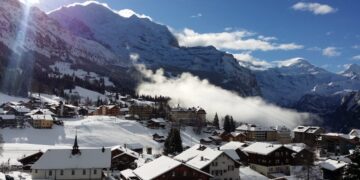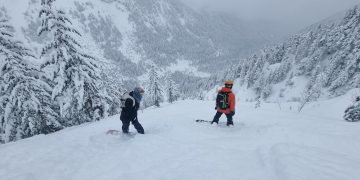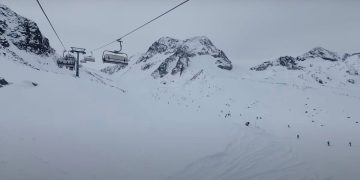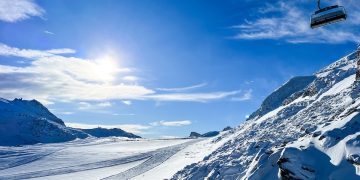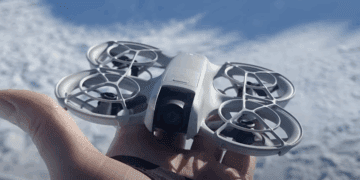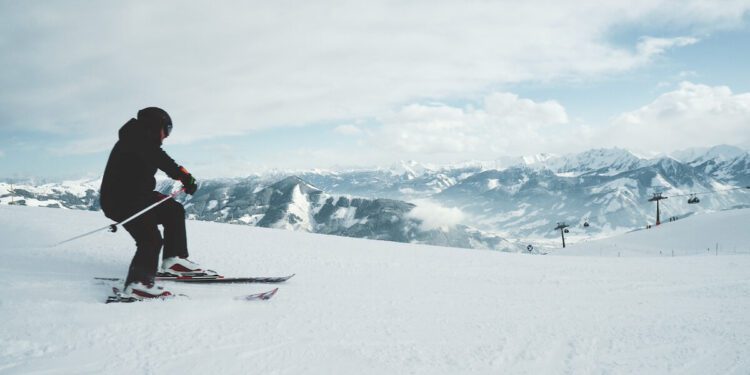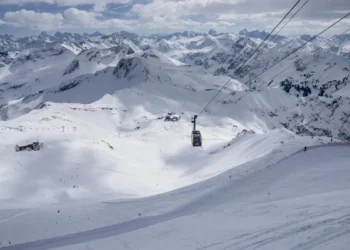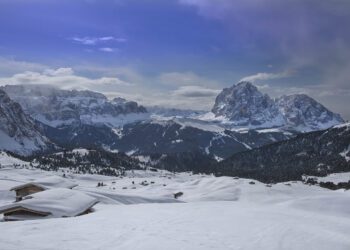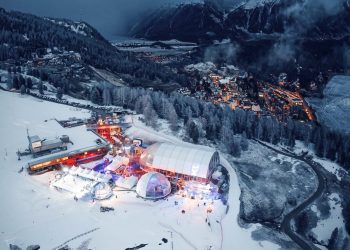Now that most ski resorts have stopped running their lifts, and thoughts turn to Summer pursuits, it’s worth looking at the season past to understand how things played out. Obviously in the era of climate change, the winter is changing, and is becoming less predictable. For skiers and snowboarders, this means that the weather is less certain that it used to be during the winter months, but for business owners it can be particularly disruptive and even challenging to maintain their offerings.
El Niño, a climatic phenomenon known for disrupting weather patterns globally, hinted at substantial snowfall for the Alps, the Pyrenees, and parts of Eastern Europe.
Let’s delve into how the 2023/24 winter season unfolded, offering a comprehensive look at the season that was – for skiers and snowboarders navigating the slopes of Europe.
November and December 2023
The season kicked off with cautious optimism as early snow in late October hinted at a promising start. November saw a gradual build-up of snow cover across the northern Alps, particularly in Austria and parts of Switzerland, allowing several premier resorts to open select pistes ahead of schedule.
France’s higher altitudes enjoyed their share of early snowfall, setting a picturesque scene for the holidays.
Over in Italy, the Dolomites experienced a slower start, with sparse snowfall initially, compelling reliance on snowmaking facilities to complement the natural snow.
The Pyrenees welcomed December with a significant snowstorm that blanketed the range, marking one of the most robust starts to the season in recent memory. Andorra, in particular, boasted impressive early-season conditions, attracting skiers and snowboarders keen on exploiting the fresh powder.
Eastern Europe had a mixed start, with Bulgaria witnessing ample snow to commence the season effectively, while Romania and Slovenia experienced delayed openings due to lighter snowfall and warmer temperatures.
Into the New Year 2024
January maintained the momentum, with consistent snowfall enriching the snowpack across the continent. The Alps experienced one of their best starts in over a decade, with record-breaking snow depth reported in various resorts. This period marked a peak in the season, with near-perfect conditions that reignited the initial optimism. Avalanche risk, however, was a concern, with authorities urging caution and the extensive use of guides for off-piste adventures.
The Pyrenees saw a continuation of good fortune, with consistent snowfall supporting excellent skiing conditions well into the New Year. The addition of modern snowmaking capabilities across key resorts such as Baqueria Beret and Grandvalira ensured that even milder spells didn’t deter the winter sports activities.
Eastern Europe’s ski season gained momentum with a cold snap in mid-January, improving conditions in Slovenia and Romania, and offering some of the best skiing in years in Bulgaria, complemented by fresh snow and cool temperatures.
Patchy February
February brought a challenging phase for much of Europe, with warmer temperatures and sporadic snowfall introducing a degree of unpredictability. The Alps, particularly the western parts, experienced a noticeable thinning of the snowpack, urging resorts to deploy extensive snowmaking. Eastern resorts with higher altitudes and northerly aspects fared better, retaining much of their snow quality.
The Pyrenees navigated through February with moderate success, relying on a solid early base to sustain conditions, though some southern slopes suffered from exposure to the sun and warmer breezes.
Eastern Europe felt the warmth more acutely, with conditions becoming highly variable and dependent on elevation and aspect. However, late February saw a rejuvenating cold front, briefly revitalizing the slopes and offering a reprieve to skiers and snowboarders.
End of Season Snowfall
March delivered a parting gift with a significant snowfall across much of Europe, surprising many and extending the season beyond expectations. The Alps, particularly in Austria and eastern Switzerland, enjoyed a late-season revival, with substantial snowfalls refreshing the pistes and off-piste areas alike. Resorts such as Zermatt saw some incredible snowfall during the later parts of the season, including well into April and even nudging towards May.
The Pyrenees, consistent in their performance throughout the season, welcomed the late snow, enhancing conditions and allowing for extended season operations in several resorts.
Eastern Europe, too, partook in this end-of-season bounty, with late snowfalls providing a delightful conclusion to what was a rollercoaster season.
As Pierre-Henri Mainetti, Head of Sales at Crans Montana in Switzerland says: “This winter was quite a good one. When you have snow quickly in the season which was our case, it sets the tone for the season. We were not worried with the lack of snow until beginning of March. Then the weather started to fool around.
Warm temperatures, wind (Foehn) rain up to 1800m , then cold again, and so on playing yoyo.”
Also in Switzerland, Stefan Stolwijk of Ski Hostel found the season to be satisfactory. “It was a great start, with lots of snow in December, but then the rain and a warm February was a little worrying. But the late season snow made it a good season in the end – all our resorts stayed open as usual and we had a lot of fun with our clients and guests”.
North American Ski Season Summary
In comparison, the North American ski season unfolded with its twists and turns. The Rockies and Pacific Northwest experienced a generous snowfall, aligning with the El Niño predictions. However, much of the Rockies and West of the Americas was then hit by rain which pretty much wiped out any snow cover, making patchy and icy conditions across many of the main resorts. Places like Whistler and Mammoth were looking pretty shaky as we moved from 2023 into 2024.
However, late January and into February started to see some recovery as snowfall picked up across the region, leading to more familiar conditions. The season progressed well with good conditions into March and April across much of the west of continental America.
The East Coast saw a mixed season, with early promise tapering off to a warmer, wetter finish. However, innovative snowmaking and grooming efforts ensured that slopes remained open and enjoyable.
Summing up…
The winter season of 2023/24, marked by an El Niño influence, delivered a mixed bag of conditions. But most ski resorts from Europe to North America would say that the winter season 2023/24 has been a great one, with some excellent snow coverage, despite some patchy conditions at times.
As Pierre-Henri Mainetti adds, “In the last years It’s been quite difficult to plan how the season is going to be. This is something skiers have to adapt to and our main trouble , coming out of this, is late bookings. People tend to wait for the snow to fall before booking which is perhaps to be expected as it can be an expensive trip and you want to make the most of it.
“Nature is the boss and we have to follow her. In the end, I feel it’s better this way; meaning mountain is not something you just order and get. It’s something you must enjoy the way it is. Perhaps it’s the same as going to the beach when it rains or when you can’t stand on the beach because the sun is scorching.
So yet climate is changing and we need to adapt to it.”
Check out: Winter Season Prediction 2024/25
Get the latest ski and snowboarding news, reviews and deals straight to your inbox with our free newsletter. Sign up below.
